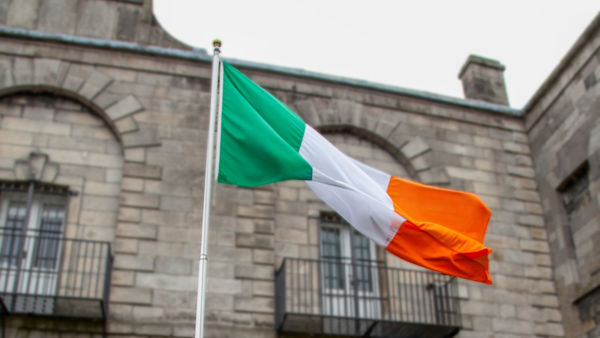The Amazing Life of Waterford’s Favorite Son
By Pat O'Connor
During our travels in Ireland, it's the memories of the Irish people we meet that often become our most treasured souvenirs. And in a few cases, the most memorable folks you'll encounter have been dead for generations.
If your travels include Waterford, the name of Thomas Francis Meagher (pronounced "Mahr") will soon be a familiar one. Perhaps no other Irishman this side of St. Patrick led a more colorful life, a life that reads like a movie script and epitomizes the label "fighting Irish."
Born the son of Waterford's mayor — one of the few wealthy Catholic businessmen in town in 1823 — Meagher benefited from a quality education (partly in England) during which he won awards for poetry and debating. His passion for Irish nationalism and his temperamental nature led him to join the radical Young Ireland movement. These hot-blooded young revolutionaries had lost patience with elder statesman Daniel O'Connell's non-violent approach to gaining independence from Britain, and now advocated armed insurrection. Meagher's fiery speeches earned him the nickname "Meagher of the sword."
In 1845, the potato famine crippled Ireland, and nationalists like Meagher blamed the tragedy on continued food exports to Britain, then the richest nation on earth. He traveled to France in 1848 as a delegate for the Young Irelanders and returned with a gift from the sympathetic French: the first Irish tricolor flag — green (to represent the Gaelic/Catholic natives), orange (for the English/Protestant planters who arrived in the early 1600s), and a white stripe in the middle to signify the "lasting truce and heroic brotherhood between the two communities." (It became the official national flag upon Irish independence in 1921.)
When the Young Ireland rebels finally mounted an uprising in 1848, the country was too weak from starvation to care. The only pathetic skirmish that took place was a gun fight with local police in County Tipperary that became known as the "Battle for Widow McCormack's cabbage patch." Meagher and a handful of other rebel leaders were sentenced to hang. But Queen Victoria commuted these sentences to life in the penal colony of "Van Dieman's Land" (Tasmania).
After three years of penal servitude, Meagher escaped in an open rowboat and spent four days at sea. The luck of the Irish held, as he was eventually picked up by an American whaling ship and taken to San Francisco. A few months later, he had made his way to New York, where he reveled in the opportunities that independence from Britain had given the Americans. He became a lawyer, popular speaker, and founder of newspapers for the growing Irish immigrant population.
Thriving on adventure and quick to spot opportunities, Meagher then spent a year in Central America studying the feasibility of a rail line across Panama or a canal through the isthmus in Nicaragua. While there, he managed to also find time to hunt jaguars and write articles about his travels for Harper's Magazine.
He was back in the US in time to witness the start of the Civil War in 1861. As an officer in the Union army, Meagher recruited Irish immigrants into the New York militia and rose to the rank of general in command of the "fighting 69th" Irish Brigade. His soldiers wore sprigs of clover in their hats while marching under a green flag embroidered with an Irish harp and the words "Erin go Bragh" ("Ireland forever"). In the fall of 1862, on the bloodiest day of the war, Meagher had his horse shot out from underneath him as he led his soldiers on an almost suicidal charge against Confederate forces at the battle of Antietam. Three months later he was wounded during the carnage of repeated charges on Marye's Heights in the battle of Fredricksburg. The Irish Brigade was decimated, but Meagher survived the war.
A few months after war's end, he became the first governor of the Montana territory and was soon raising forces to combat hostile Indians (a decade before Custer's demise at Little Bighorn). One night in the summer of 1867, at age 44 — after beating the odds time and again on three different continents — Thomas Francis Meagher fell off a riverboat and drowned in the Missouri River. Sheer accident, foul play, or careless drunkenness? Nobody knows — but his body was never found.
A statue of Meagher gallantly charging on horseback, sword in hand, stands today in front of the Montana state capitol building in Helena. His brief life as a revolutionary, orator, patriot, convict, journalist, explorer, soldier, and politician can only be summed up as Irish pride...personified.
Anyone with a taste for history will enjoy finding out more about Meagher and the sturdy Viking/Norman roots of Waterford in the excellent Waterford Museum of Treasures. Afterward, stop by the historic nearby Granville Hotel for a cup of coffee, and check out the proud plaque by the front door claiming Meagher as a hometown hero. Wander into the hotel lobby and find his formal portrait on the wall. And when you see the Irish tricolor flowing grandly in front of the St. Patrick's Day parade in Dublin, remember the man who brought that flag to Ireland.
Pat O'Connor is the co-author of the Rick Steves Ireland guidebook.


